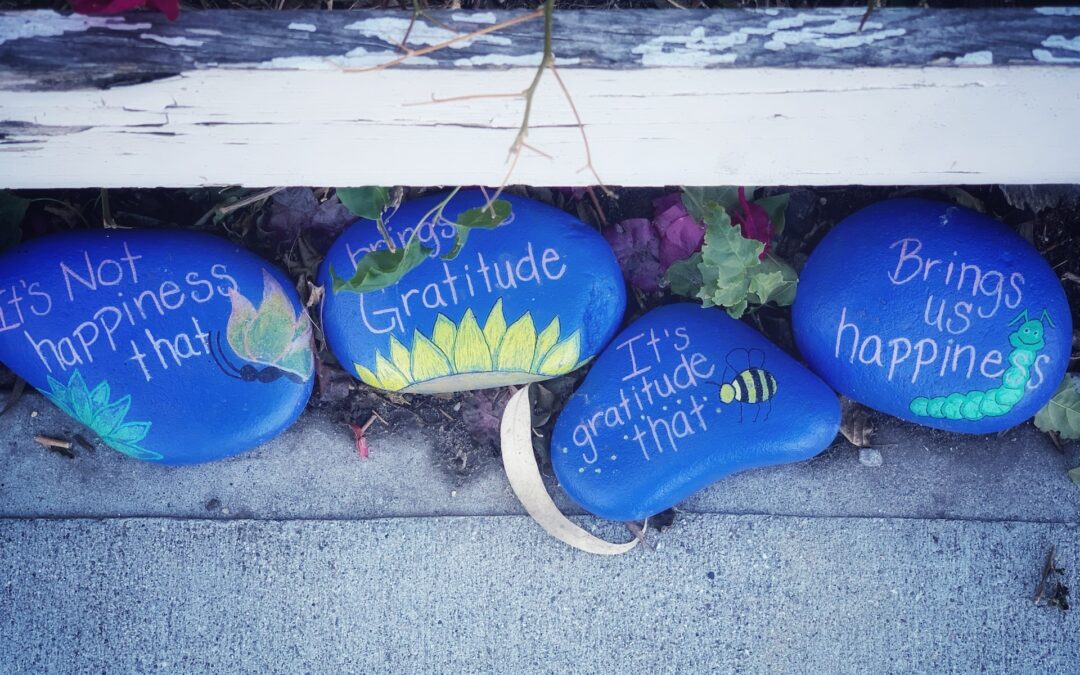
Self-Care, Wellness
Box breathing, also known as square breathing or four-square breathing, is a structured breathing technique that involves inhaling, holding, exhaling, and holding the breath in equal counts. The practice is named for its simple visualization of tracing the outline of a square with each breath cycle.
Origins of Box Breathing
While it’s challenging to pinpoint an exact origin, similar breathing techniques have been used for centuries in various cultures and traditions.
One possible origin of box breathing can be traced back to ancient yogic practices in India. Pranayama, the yogic practice of controlling the breath, includes techniques similar to box breathing. These techniques have been passed down through generations and are still practiced today as a way to calm the mind and body.
Box breathing has also been used in military and tactical settings, particularly in the Navy SEALs. It’s believed to have been incorporated into their training to help manage stress and maintain focus in high-pressure situations. The structured nature of box breathing makes it easy to teach and implement, which is beneficial in intense environments.
Regardless of its specific origin, box breathing has gained popularity due to its simplicity and effectiveness in promoting relaxation and focus. Its structured approach, where inhalation, holding, exhalation, and holding are all done for the same count, makes it easy to remember and practice, even in the midst of stress or anxiety.
Benefits of Box Breathing
Box breathing offers a wide range of benefits for both the mind and body, including:
- Stress Reduction: By slowing down the breath and regulating the nervous system, box breathing helps to reduce the body’s stress response, promoting feelings of relaxation and calm.
- Improved Focus and Concentration: The rhythmic nature of box breathing can enhance mental clarity, sharpen focus, and improve cognitive function, making it an effective tool for managing distractions and increasing productivity.
- Enhanced Emotional Regulation: Box breathing encourages mindful awareness of the breath and emotions, allowing individuals to respond to challenging situations with greater ease and resilience.
- Lowered Blood Pressure: Deep, controlled breathing has been shown to lower blood pressure and promote cardiovascular health, reducing the risk of heart disease and other related conditions.
How to Practice Box Breathing Effectively*
Follow these simple steps to practice box breathing:
- Find a comfortable seated position with your spine straight and your shoulders relaxed.
- Close your eyes and take a few deep breaths to settle into your body.
- Inhale slowly and deeply through your nose for a count of four seconds, feeling your abdomen expand with each breath.
- Hold your breath for a count of four seconds, maintaining a sense of stillness and presence.
- Exhale slowly and completely through your mouth for a count of four seconds, emptying your lungs fully.
- Hold your breath for a count of four seconds before beginning the next cycle.
- Repeat this sequence for several rounds, gradually increasing the duration of each breath cycle as you become more comfortable with the practice.
Incorporating Box Breathing Into Your Self-Care Routine
Box breathing can be practiced anytime, anywhere, making it a versatile tool for promoting relaxation and stress relief throughout your day. Try incorporating box breathing into the following activities:
- Morning Routine: Start your day with a few minutes of box breathing to set a calm and centered tone for the day ahead.
- Midday Break: Take a short break from work or daily activities to practice box breathing and recharge your energy levels.
- Before Bed: Wind down in the evening with a few rounds of box breathing to relax your body and prepare for restful sleep.
Remember, consistency is key when it comes to reaping the benefits of box breathing. Make it a regular part of your self-care routine, and watch as it transforms your mental and emotional well-being over time.
*Disclaimer:
Before beginning any new relaxation or breathing technique, it’s important to consult with a qualified healthcare professional, especially if you have any pre-existing medical conditions or concerns. While box breathing is generally safe for most individuals, it may not be suitable for everyone, particularly those with certain respiratory conditions or medical issues. Additionally, please be mindful of your body’s limits and sensations while practicing box breathing, and discontinue the exercise if you experience any discomfort, dizziness, or shortness of breath. This breathing technique is intended to promote relaxation and stress relief and should not be used as a substitute for professional medical advice or treatment. Always prioritize your health and well-being, and listen to your body’s cues when engaging in any new wellness practice.

Self-Care, Wellness
Why Napping Matters
In today’s fast-paced world, where busyness is often glorified and productivity is prioritized, the importance of rest and relaxation cannot be overstated. Napping provides an opportunity to recharge and reset, allowing our bodies and minds to recover from the demands of daily life and perform at their best. Here are some reasons why napping is so important:
- Improved Cognitive Function: Napping has been shown to enhance cognitive function, memory consolidation, and problem-solving skills, leading to improved focus, creativity, and productivity.
- Increased Alertness and Energy: Taking a nap can help combat feelings of fatigue, drowsiness, and lethargy, providing a natural energy boost to help you power through the rest of your day.
- Stress Reduction: Napping has a calming and stress-relieving effect on the body, lowering levels of cortisol (the stress hormone) and promoting relaxation and emotional well-being.
- Enhanced Mood: Napping can lift your spirits and improve your mood, reducing feelings of irritability, frustration, and overwhelm, and promoting a sense of tranquility and contentment.
- Physical Recovery: Napping allows your body to rest and recover from physical exertion, promoting muscle repair, tissue regeneration, and overall physical health and vitality.
Different Types of Naps
Not all naps are created equal, and different types of naps serve different purposes depending on your needs and preferences. Here are some common types of naps:
- Power Nap: A short nap lasting 10-20 minutes, ideal for boosting alertness, focus, and energy without entering deeper stages of sleep.
- Catnap: A brief nap lasting 5-10 minutes, often taken sitting upright, and designed to provide a quick refreshment without disrupting your daily routine.
- Nappuccino: A combination of a caffeine boost (typically in the form of coffee or tea) followed by a short nap, designed to maximize alertness and productivity by leveraging the benefits of both caffeine and sleep.
- Recovery Nap: A longer nap lasting 30-90 minutes, intended to promote deeper relaxation, rejuvenation, and physical recovery, while also allowing for memory consolidation and cognitive refreshment.
Incorporating Naps into Your Self-Care Routine
Integrating naps into your self-care routine can be a powerful way to prioritize your health, happiness, and overall well-being. Here are some tips for making the most of your naptime:
- Schedule Regular Naptimes: Set aside time in your daily schedule for napping, ideally during the mid-afternoon slump or whenever you feel your energy levels starting to dip.
- Create a Relaxing Environment: Find a quiet, comfortable, and dimly lit space where you can nap undisturbed, whether it’s a cozy corner of your home, a comfortable chair, or a serene outdoor spot.
- Set the Scene: Create a relaxing atmosphere by dimming the lights, playing soothing music or nature sounds, and using aromatherapy techniques like lavender or chamomile to promote relaxation and sleep.
- Practice Nap Hygiene: Establish a pre-nap routine to signal to your body that it’s time to wind down, such as practicing deep breathing exercises, stretching, or taking a warm bath to relax your muscles and calm your mind.
- Limit Nap Duration: Keep your naps short and sweet to avoid disrupting your nighttime sleep schedule and experiencing grogginess or sleep inertia upon waking. Aim for 10-30 minutes for a quick pick-me-up or up to 90 minutes for a deeper rejuvenation.
By embracing the art of napping and incorporating regular naps into your self-care routine, you can experience a multitude of benefits for your physical, mental, and emotional well-being. So go ahead and give yourself permission to rest, recharge, and indulge in the blissful embrace of a nap.

Coaching, Creative, Entrepreneurs, Self-Development
It’s not uncommon for people to turn to fear as a source of motivation in pursuit of their goals and aspirations. We may set ambitious targets for ourselves, driven by the fear of failure or the desire to avoid negative consequences. While fear can propel us into action in the short term, relying on fear-based motivation has significant drawbacks that can hinder long-term success and well-being.
Understanding Fear-Based Motivation
Fear-based motivation operates on the principle of avoidance – we are driven to act by the desire to escape or mitigate potential threats, whether real or perceived. This fear may manifest as anxiety, stress, or pressure to perform, compelling us to take action out of fear of the consequences of inaction.
Common manifestations of fear-based motivation include
- Fear of Failure: The fear of failure can drive us to push ourselves harder, set ambitious goals, and strive for perfection in pursuit of success. However, this fear can also paralyze us with self-doubt, leading to procrastination, perfectionism, and avoidance of challenges.
- Fear of Rejection or Judgment: The fear of rejection or criticism from others can be a powerful motivator, driving us to seek validation and approval through our actions. However, this fear can also limit our authenticity and creativity, as we may avoid taking risks or expressing ourselves authentically for fear of disapproval.
- Fear of Missing Out (FOMO): In today’s hyperconnected world, the fear of missing out on opportunities or experiences can drive us to constantly seek validation and validation from others, leading to overcommitment, burnout, and a lack of fulfillment.
The Pitfalls of Fear-Based Motivation
While fear-based motivation may provide a temporary boost in productivity or performance, it is not sustainable in the long run and can have detrimental effects on our well-being and success:
- Burnout and Exhaustion: Constantly operating from a place of fear can lead to chronic stress, burnout, and exhaustion. The pressure to constantly perform at a high level and meet unrealistic expectations can take a toll on our physical, mental, and emotional health.
- Lack of Joy and Fulfillment: When we are driven by fear, we may lose sight of the intrinsic joy and satisfaction of pursuing our passions and interests. Instead of enjoying the process, we focus solely on the outcome, creating a sense of emptiness and dissatisfaction.
- Diminished Creativity and Innovation: Fear-based motivation can stifle creativity and innovation. We may be more focused on avoiding mistakes or negative outcomes than exploring new ideas and taking risks. This can inhibit our ability to adapt to change and seize opportunities for growth and innovation.
Moving Beyond Fear-Based Motivation
To break free from the cycle of fear-based motivation and cultivate a more sustainable and fulfilling approach to achieving our goals, consider the following strategies:
- Cultivate Self-Compassion: Practice self-compassion and kindness toward yourself, recognizing that failure and setbacks are natural parts of the learning process. Treat yourself with the same kindness and understanding you would offer to a friend facing similar challenges.
- Set Meaningful Goals: Instead of focusing solely on outcomes or external validation, set goals that are aligned with your values, passions, and interests. Pursue activities and projects that bring you joy and fulfillment, regardless of external rewards or recognition.
- Embrace Growth Mindset: Adopt a growth mindset, believing that your abilities and intelligence can be developed through effort and perseverance. Embrace challenges as opportunities for growth and learning rather than threats to be avoided.
- Practice Mindfulness: Cultivate mindfulness and present-moment awareness to help you stay grounded in the here and now. Notice when fear-based thoughts arise and gently redirect your attention to the present moment, where you can take positive action toward your goals.
- Seek Support: If you find yourself struggling with fear-based motivation, don’t be afraid to seek support from friends, family, or a professional coach or therapist. Talking about your fears and challenges can help you gain perspective, identify solutions, and build resilience.
In conclusion, while fear-based motivation may provide a temporary boost in productivity, it is not sustainable in the long run and can have detrimental effects on our well-being and success. By cultivating self-compassion, setting meaningful goals, embracing a growth mindset, practicing mindfulness, and seeking support when needed, we can break free from the grip of fear and pursue our goals with courage, authenticity, and fulfillment. Remember, true success is not measured by external achievements alone but by the joy, meaning, and impact we create along the way.

Coaching, Self-Development, Wellness
In the pursuit of our long-term goals, it’s easy to become consumed by the vision of our desired future. We invest our time, energy, and focus into chasing after success, believing that our happiness hinges upon reaching that ultimate destination. However, in our relentless pursuit of the future, we often overlook the abundance and fulfillment that exists in our daily lives.
Gratitude Makes You Happier
Neurologists have learned that feelings of gratitude actually change the way your brain works. When you are consciously aware of all the wonderful things in your life, you are happier and more content. When you are happy and feeling good about your life, it’s easier to believe that more good things await you down the road.
Gratitude Lowers Stress
A life filled with the struggle always to be better will lead to a life of stress. Yes, you want to reach your goals. You want to unlock all the potential that’s inside you. But finding a way to balance this desire with gratitude for what you’ve already accomplished and what you have in your life today is also important. When constantly pushing yourself forward, believing you aren’t good enough today is easy. Focusing on what you must be grateful for today lowers your stress level and helps you enjoy the journey to your ultimate goal.
Gratitude Makes You More Optimistic
Believing the grass is always greener on the other side is a sure way to ensure your dissatisfaction with life. It makes you feel like you may never get the life you want. This pessimism just makes everything in life harder. You may even just give up on your dreams because you don’t believe you can attain them. Keeping a grateful mindset offers a way to enjoy life now and look forward to the future once your goals are realized.
While long-term goals provide direction and purpose, they should not overshadow the importance of living in the present moment and expressing gratitude for what we already have achieved. Here’s why striking a balance between long-term aspirations and daily gratitude is essential for both happiness and success:
- Finding Joy in the Journey: While achieving long-term goals can bring a sense of accomplishment, true happiness lies in the journey itself. By embracing the process and finding joy in the small victories along the way, we can experience fulfillment and satisfaction in the present moment, rather than waiting for some distant future to bring us happiness.
- Building Resilience: Acknowledging and appreciating our past achievements fosters resilience and confidence in our ability to overcome challenges and achieve future goals. Reflecting on how far we’ve come reminds us of our strengths and capabilities, empowering us to face obstacles with optimism and determination.
- Fostering Positive Mindset: Practicing gratitude shifts our focus from what we lack to what we already have, fostering a positive mindset and outlook on life. When we approach our goals from a place of abundance rather than scarcity, we attract more opportunities for growth and success into our lives.
- Enhancing Well-Being: Research has shown that expressing gratitude has numerous benefits for our physical, mental, and emotional well-being. From reducing stress and anxiety to improving sleep and overall happiness, expressing gratitude for the blessings in our lives promotes holistic health and wellness.
So how can we strike a balance between our long-term goals and daily gratitude? Here are some practical strategies to integrate gratitude into your daily life:
- Daily Reflection: Take a few moments each day to reflect on what you’re grateful for, whether it’s your health, relationships, accomplishments, or simple pleasures like a beautiful sunset or a delicious meal.
- Express Appreciation: Don’t hesitate to express gratitude to others for their support, kindness, or contributions to your life. A heartfelt thank you can strengthen relationships and cultivate a culture of positivity and appreciation.
- Celebrate Small Wins: Acknowledge and celebrate the small victories and milestones you achieve along the way toward your long-term goals. Each step forward, no matter how small, is worthy of recognition and celebration.
- Practice Mindfulness: Incorporate mindfulness into your daily routine to stay grounded in the present moment and develop awareness of the beauty and abundance surrounding you.
Obtaining a grateful spirit doesn’t take much time and effort, but it makes a huge difference in your life. Start by keeping a small notebook with you or using an app on your phone to note the little things that happen throughout your day for which you are grateful. Some people prefer to keep a gratitude journal by their bed and add a short list of things that they are grateful for that day. Give it a try if you feel you’ve been too focused on a goal, making you unappreciative of what you already have.
While long-term goals provide direction and purpose, true happiness is found in embracing the journey and expressing gratitude for the blessings in our lives. By striking a balance between our aspirations for the future and appreciation for the present moment, we can experience greater fulfillment, resilience, and well-being on our path to success. So, as you pursue your long-term goals, remember to pause, reflect, and express gratitude for the abundance and joy that already exists in your life.




